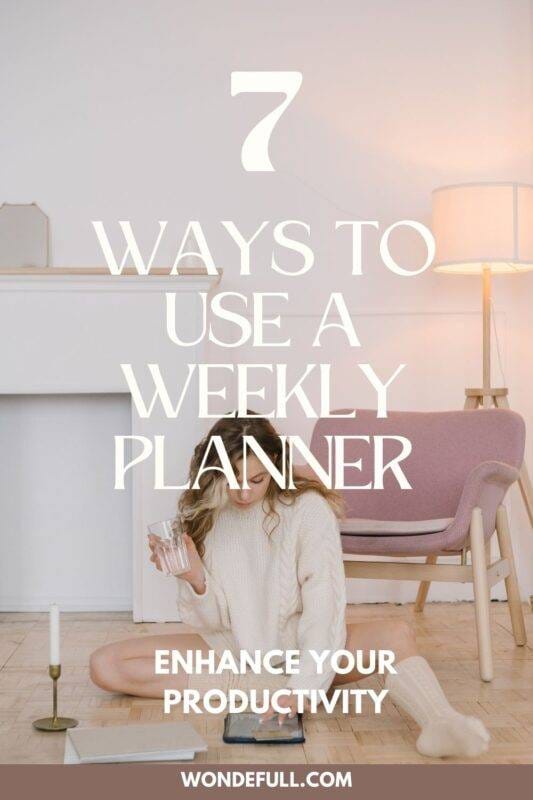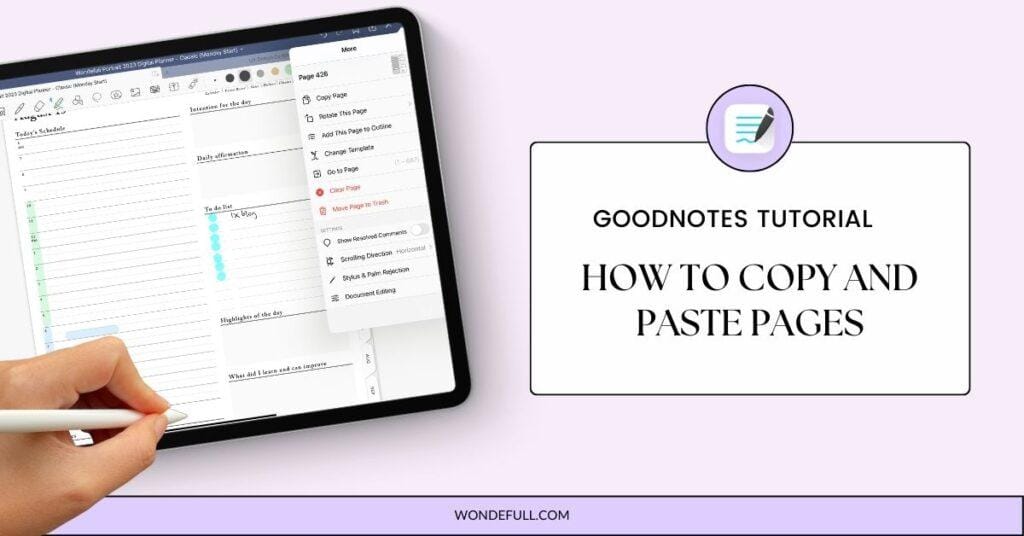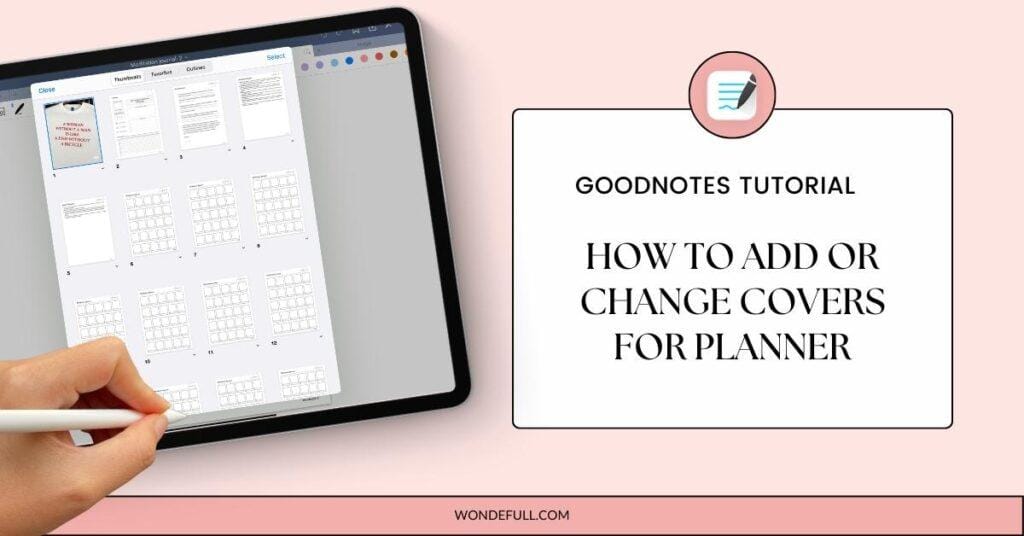Since I started digital journaling and planning in 2022, the weekly planner has become my favourite as it gives me an overview of how I spend my energy and time in a week. I have been experimenting with how to use a weekly planner effectively. My rules for selecting the seven methods: must be easy to stick with and help improve my productivity and well-being.
Although there are seven methods, I mix them around weekly. So, feel free to experiment and craft your weekly planning layout.
7 ways to use your weekly planner

Each week, from left to right, provides an example of a specific way to use your weekly planner. Let’s start with the first one!
PS – I created the 2024 planner, which is available here if you are interested.
1. Vertical planning
As the name suggests, you plan daily on your weekly planner from top to bottom.
Vertical planning works best when you plan your day the night before. I start by documenting my appointments and commitments. Then, I will put down all my work-related stuff, followed by my meals and activities or routine, such as workout, travel, reading, and social life.
Here’s an example:
7:30 — wake up, morning routine, breakfast
9:00 — travel to work
10:00 — full time work
12:00 — lunch
1:00 — full time work
6:00 — travel to home
7:00 — dinner and shower
8:00 — work on master’s degree application
9:30 — write a blog for wondefull
11:00 — entertainment
11:30 — read
12:00 — sleep
2. Time blocking
I bet you have heard about time blocking a lot, but what do the blocks of colours actually mean? It is you setting aside a long time on a specific activity, routine or task. Different colors indicate a different priority.
Before time blocking my weeks, I have an ideal week on the side, which consists of my prioritised items and the time I prefer to allocate.
Based on my ideal week, I will arrange my time into sections after assessing other ad-hoc commitments and deadlines that were not considered while crafting my ideal week. For instance, I allocated 1 hour of exercise on Monday, Tuesday, and Friday in my ideal week, but I have a gathering on Friday evening. Hence, I will make adjustments for the gathering on Friday evening and reschedule my Saturday evening, initially planned as a social slot, for exercise.
3. To-do list
You like to have to-do lists and check off the tasks on top? This method break downs what you have to do for everyday and you simply have to follow it. A typical to-do list contains work, business or study and chores. Don’t forget to allocate me-time for yourself, we all deserve some self-love and self-care.
Rest and self-care are so important. When you take time to replenish your spirit, it allows you to serve others from the overflow. You cannot serve from an empty vessel.
– Eleanor Brownn
4. Time tracking
Time tracking looks very similar to time blocking, except it is about what has happened. As your day goes by, record how much time you have spent on significant activities.
Subsequently, you can compare your week with your ideal or planned week. This helps you to get a better sense of what you have accomplished and where you can improve.
5. Health logging
This is very straightforward. You need to log down everything related to your health and fitness, including:
- What you ate and drank
- Supplements
- Sports and exercises
- Well-being activities
6. Memory keeping
If you are a traveller or love accumulating experiences, you will enjoy this method. As a future-oriented person, I always need to remember what has happened in the past, so I consistently create short videos for important trips and experiences. I also make a note of each on my weekly and daily planner, including other memorable moments that didn’t make it into a video.
I usually attach a photo and write down the highlight or my feelings on the side.
7. Habit tracking
Everything great starts from something small, and our habits comprise our lives. When starting a habit, it is advised to start with the lowest intensity and increase it once you feel comfortable.
As time passes, we would have accumulated many habits. For example, I read daily, write 5x a week, meditate and exercise 2-3x a week, Sunday reset routine, and so on. It is difficult to remind myself every day at a specific time as I don’t have a fixed schedule and favour flexibility. Hence, planning and tracking habits on my weekly planner help me get disciplined without feeling overwhelmed and too rigid.
Hybrid: Do it your way!
As mentioned at the beginning, you don’t have to adopt only one weekly planning strategy per week – you can mix and match as you see fit!
If you’re already using a weekly planner, we’d love to hear about the methods that work best for you. Share your experience below, and let’s learn from each other. Happy planning, everyone!
My Favorite Weekly Planner
Here’s my 2025 digital monthly and weekly planner, thoughtfully crafted for professionals, students, and entrepreneurs. Available in two timeless colours—Taupe Dream and Azure Sage—it features five versatile weekly templates to help you plan and stay on top of your weeks. Whether you prefer time-blocking, reflection journaling, or tracking progress, this planner has everything you need to elevate your digital planning experience.


Like this post? Share it on Pinterest – thank you!





